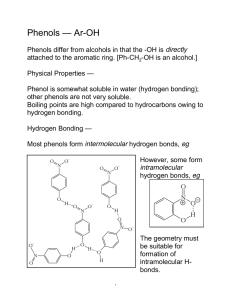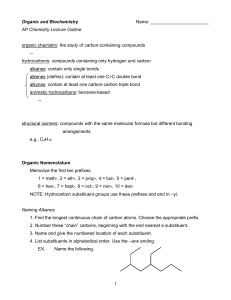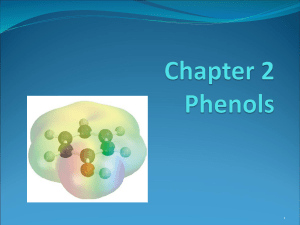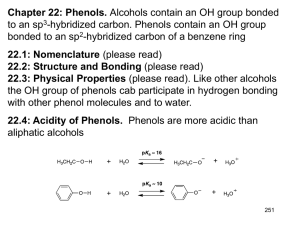More Aromaticity and Intro to Phenols Warm
advertisement
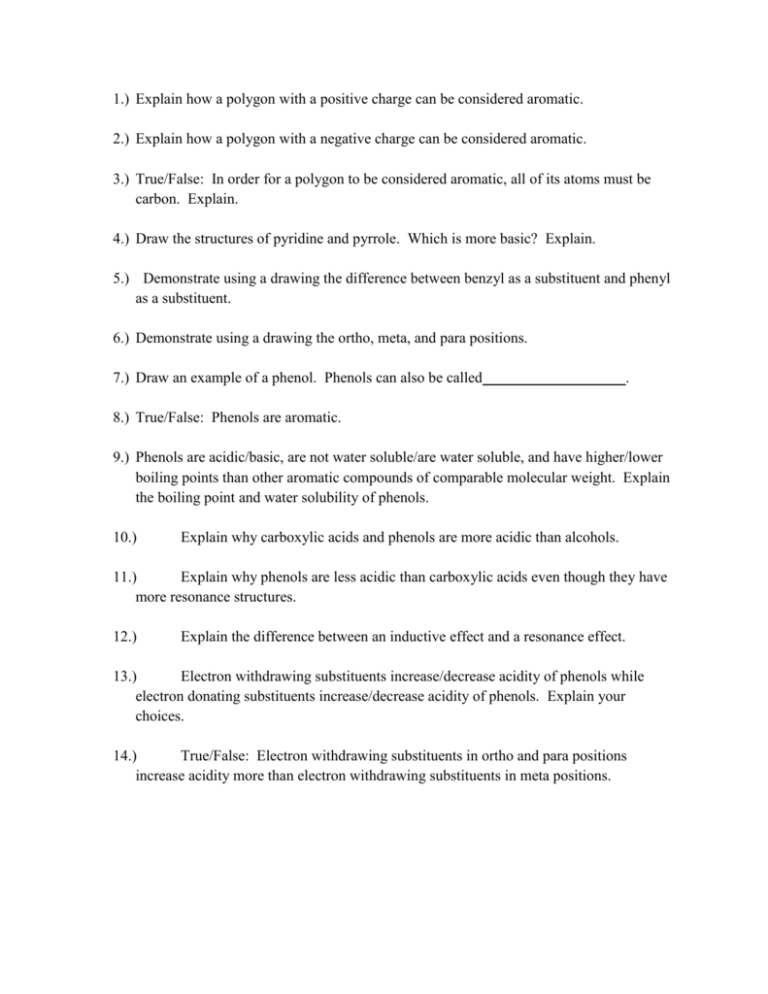
1.) Explain how a polygon with a positive charge can be considered aromatic. 2.) Explain how a polygon with a negative charge can be considered aromatic. 3.) True/False: In order for a polygon to be considered aromatic, all of its atoms must be carbon. Explain. 4.) Draw the structures of pyridine and pyrrole. Which is more basic? Explain. 5.) Demonstrate using a drawing the difference between benzyl as a substituent and phenyl as a substituent. 6.) Demonstrate using a drawing the ortho, meta, and para positions. 7.) Draw an example of a phenol. Phenols can also be called . 8.) True/False: Phenols are aromatic. 9.) Phenols are acidic/basic, are not water soluble/are water soluble, and have higher/lower boiling points than other aromatic compounds of comparable molecular weight. Explain the boiling point and water solubility of phenols. 10.) Explain why carboxylic acids and phenols are more acidic than alcohols. 11.) Explain why phenols are less acidic than carboxylic acids even though they have more resonance structures. 12.) Explain the difference between an inductive effect and a resonance effect. 13.) Electron withdrawing substituents increase/decrease acidity of phenols while electron donating substituents increase/decrease acidity of phenols. Explain your choices. 14.) True/False: Electron withdrawing substituents in ortho and para positions increase acidity more than electron withdrawing substituents in meta positions. 1.) Using molecular orbital diagrams, demonstrate how cyclopentadiene can be considered acidic. 2.) Using molecular orbital diagrams, explain how cycloheptatriene cation can be considered aromatic. 3.) Explain the relative stabilities of cycloheptatrienone and cyclopentadienone using molecular orbital diagrams. 4.) Name the following molecules. a.) O CH3 O OH H N + N S O - N H N I OH b.) N O H NH2 OH N CH3 CH2 NH F Br O NH2 Br O + N O c.) - O CH3 H O OH CH3 CH3 CH3 CH3 d.) 5.) Rank the following phenols in order of increasing acidity. OH OH OH CN H3C CH3 6.) Determine which phenol is more acidic. Explain your answer using resonance structures. OH OH NO 2 NO 2


